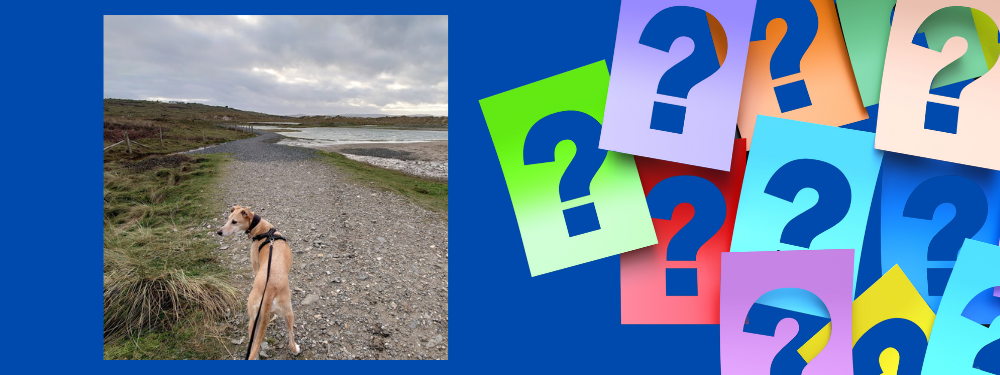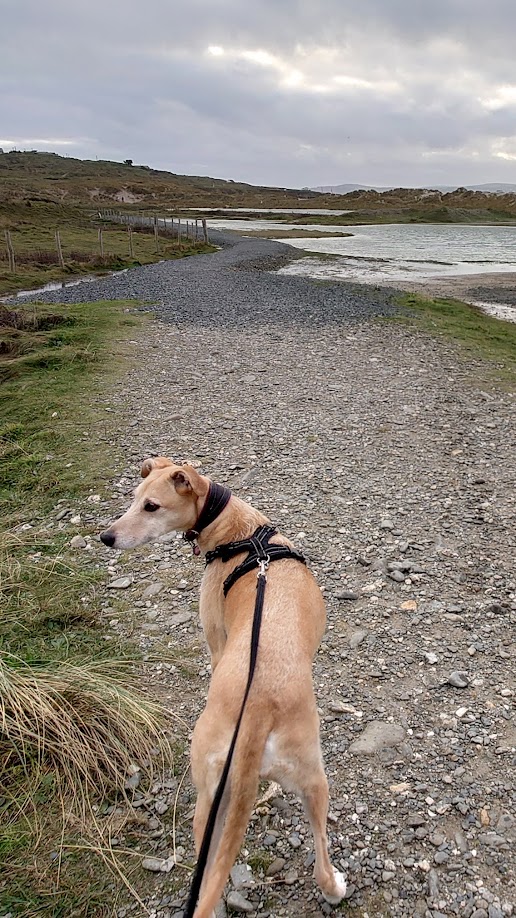Call / 07815 167247
Email [email protected]
Call / 07815 167247
Email [email protected]

As those of you who have worked with me before know, I do like to ask a lot of questions, so this blog gives you a hint of some of those initial questions I ask when I am problem solving a client’s struggles. The aim for me is to understand the behaviour so that I can give some insight into why the training you have tried is not working and give you options for helping you help your dog.
To help you assess your own dog ...
It seems a simple question, and sometimes it can be easy to define, but often it takes a while to hone down.
So for now, think about a behaviour that you struggle with, write it down if that helps. Pick something less complicated to start with so that you can work through the following questions without getting too bogged down.
Be specific.
Be as specific as possible because that will help when you start to work on a solution.
For example, if your dog jumps up on people, think about where it happens, when does it happen, when doesn’t it happen, and so on.
The behaviour has happened as you have described it above, but now think about what happened next. And then what happened after that? What did you do? What did your dog do? And then what happened after that?
The behaviour often does not end immediately. For example, dog jumps up.
This is all painting a picture of a behaviour chain that will be useful later on.
Video the behaviour.
When you watch the recording, don't just watch your dog, also take note of what you do and how that influences your dog, and how the environment adds to the picture.
Go back in time. What happened before the behaviour occurred? It might not be immediately before, it might be what happened that morning, or even the day before.
Let’s think about this jumping up.
Keep a diary.
It does not have to be anything fancy. It could be about your walks, what you feed, what mood your dog (or yourself) were in that day.
Diaries give you data, and that can be really useful to be able to track what is going on..
Now, this is the most difficult question that clients need to answer. And I have to be honest, it sometimes leads to an uncomfortable discussion for a few minutes.
Most people jump to an answer which is about NOT wanting X to happen. For example, I don’t want my dog to jump up.
That’s not going to help me or you. That leads to the inevitable desire of stopping a behaviour once it has already happened. That can be useful, but in the end most people want the behaviour not to happen in the first place.
Walk it through.
You don’t need your dog for this, you just need to consider the environment and what is possible.
For example, if you are looking at what you might like to happen when you walk out of your gate where your dog drags you through, and you have decided that you would like your dog to sit, then where will they sit, is there enough room and can you still open the gate?
Walking it through often highlights and practical limits and helps you work through to a sensible solution.
 So there you go. The point of this blog is not to give you all the answers, I would rather just get you thinking. Many of the dogs that I see have been described as stubborn or difficult, but often, when we dig deeper, there is much more to them:
So there you go. The point of this blog is not to give you all the answers, I would rather just get you thinking. Many of the dogs that I see have been described as stubborn or difficult, but often, when we dig deeper, there is much more to them: